Good food is the most important thing about any restaurant. Yet, more and more customers tend to care if the place looks, smells, and sounds good.
- "A restaurant ought to present a portrait where the service and the design and the food are all coming from the same point of view. It’s not just about creating a beautiful space, it’s about creating a memorable experience for guests," says David Rockwell, architect, and designer.
Studies show that the restaurant's atmosphere greatly impacts the potential for customers to revisit. Moreover, in the same study, service employees' reliability and attentiveness have the highest role in forming an opinion about a dining place.
The restaurant floor plan plays a vital role in designing a pleasant customer experience, ensuring the ambiance is cozy and the staff can move around quickly to accommodate every guest.
It is the backbone of solid restaurant management and a winning strategy for turning tables during rush hours, thus maximizing efficiency and ultimately increasing revenue.
Creating a restaurant floor plan means considering a kitchen plan, dining room plan, garden, and bar seating and how it all fits together.
In our comprehensive guide, you will find over 15 floor plan examples plus the tips for creating the perfect restaurant vibe.
-1.webp?width=669&height=376&name=image4%20(4)-1.webp)
What to consider when creating a floor plan
Many restaurants use floor plan software without thinking twice about how it fits with their business plan, how much foot traffic they expect, and how to use the floor plan to ensure top-notch service.
Here is a checklist of things you need to consider when creating a floor plan for your new restaurant:
1. Lifestyle of your target audience
Your clientele is what determines the essentials of your floor plan design. For example, if digital nomads use your restaurant for work, you should have electrical outlets positioned across the dining areas so that the guests can charge their laptops while working.
2. The space at your disposal
The key to an optimal floor plan is the effective use of space. Based on the available functional space, interior designers can decide how many seats you can fit in.
3. Accessibility
One of the important components of a floor plan is making sure it is accessible to all customers. This implies obliging to the Disabilities Act, enabling wheelchair access, but also making the restaurant accessible to families with children, etc.
4. Building codes
Building codes are laws that set the standards for essential systems such as plumbing, heating, and air conditioning, and they need to be considered in the floor plan scheme.
5. Utilizing the use of light
Exploring how to use natural light as much as possible during the day and improving light fixtures for the evenings can make a difference to the restaurant's ambiance.
6. Achieving maximum efficiency
Finally, the game of the good floor plan is to improve restaurant efficiency. The service counters should be placed at the very entrance of the restaurant, the bar areas should be separated from the dining area, and extra space should be left for the servers to move with ease.
How to create the perfect restaurant floor plan
Restaurant floor planning is the pillar of starting a successful business in the restaurant industry. Many restaurant owners go for the option that they fancy the most aesthetically.
However, among many various restaurant layouts, you need to make a selection of features to accommodate the needs of your target group and create a memorable customer experience.
1. Identify your clientele
Before creating a restaurant floor plan, get to understand your target clientele. Answer the following questions:
- To whom are you looking to cater?
- Do you serve breakfast, lunch, and dinner?
- When is the rush hour in your area?
The floor plan should be adjusted to the needs of your guests - an upscale dining restaurant with built-in booths requires different floor planning than a fast food diner with a wide service counter. Moreover, the needs of the clientele will help you decide on additional features that take place in the space planning.
For example, if you are hosting urban and busy guests who don't like to wait around for the waiter, perhaps you should consider installing POS stations (payment stations) on the service counter and speed up the process.
2. Maximize space and revenue
Once you've identified who you are most likely to cater to, what time of day you expect to be busiest, and what kind of service you want to provide, you can pick a restaurant floor plan.
A general rule is mixing your tables to include a diverse mix of seating availability. Two-tops, three-tops, four-tops, and five-tops should all be included.
Try not to squeeze as many customers in - make sure that everyone has elbow room at their tables. The space also dictates the table size and the maximum number of covers per table. After all, your mission is to provide a top dining experience and comfort.
Families and large groups are leaning toward four and five-tops, with the flexibility to mix and match. This is especially important if you plan to accommodate large parties.
If you are a family-style restaurant, you can maximize the use of space in the floor plan in a creative way. For example, new restaurants are often using community-style dining and this trend has really taken off!
On the other hand, for business clientele you should use two and three-top tables, creating a minimalistic aesthetic with the restaurant floor plan and simple interior design.
3. Prioritize flow in the floor plan
The most vital component to a restaurant floor layout, once you've identified who will be dining at your restaurant, is to subtly move things along to maximize profit.
While creating a flow helps maximize your revenue, be sure not to rush your diners! With that being said, flow is a necessary and vital component of any business and needs to be properly thought out.
Flow is the direction of traffic in a restaurant and is truly the art of finding the balance between quality and quantity. There are so many different aspects to take into account when discovering flow, and all vary with the type of restaurant and service you are offering.
Fine dining will not focus as much on flow, as many higher-end restaurants are booked well in advance and have a waiting list and waiting area. Flow is a component of the restaurant floor plan and it lets your personnel know how to move smoothly through the space and cover all guests attentively.
For example, if you offer both the buffet and a la carte menu, the positions of the buffet and dining area can influence customer behavior and cater to a bigger number of guests. Aside from efficient management of the waitlist, pacing a buffet is another way of avoiding lines.
-3.webp?width=669&height=371&name=image7%20(4)-3.webp)
Flow also applies to your servers. If your servers have space to operate, they can provide timelier service and can help facilitate turning tables quicker without creating the impression of rushing the guest.
Regardless of restaurant type, be sure to have enough space from the service stations to the dining area, and between tables to allow servers to operate freely.
Moreover, make sure that all your staff is well introduced to the restaurant floor plan and ready to optimize the flow and swipe the guests off their feet.
It is a good practice to hold pre-shift meetings to get your team members on the same page and refine the dine-in experience you are providing.
15+ examples of restaurant floor plans
If you feel uninspired, here are different restaurant floor plan examples to kick-start your creative ideas.
Floral restaurant floor
-1.webp?width=669&height=1003&name=image9%20(3)-1.webp)
Bringing new life into your restaurant can be challenging, but Pigmento Experimenta did an excellent job with Pan Plano. By refreshing the space with trees both indoors and outdoors, they achieved a natural look and ensured a pleasant guest experience.
Elegant wood design
.webp?width=669&height=753&name=image13%20(2).webp)
Mesmerized by the Moroccan style and use of natural wood, Amy designed a dining area that combines efficiently used round tables, counter space, and a functional kitchen.
Island coffee shop concept
-3.webp?width=669&height=669&name=image1%20(5)-3.webp)
When creating the Ocean Coffee floor plan, Ihor Skrypnyk made the coffee the center of the space, where everything is happening. He designed a functional space with plenty of seating to accommodate singles, couples, and large groups equally.
Bar and restaurant design
-2.webp?width=669&height=492&name=image11%20(2)-2.webp)
This restaurant layout is created with FloorPlanner.com and it is designed for restaurants with more extensive square footage. It presents a dining area with a kitchen and a big bar with a walk-in cooler that can serve as the waiting area for new guests.
Socialize, cook, eat
.webp?width=669&height=535&name=image14%20(2).webp)
Architect Ralph Tullie created this restaurant floor plan to serve as the neighborhood's go-to place. The wide restaurant kitchen floor plan is divided in two separate areas, enabling the quick orders and appetizers to be prepared independently from the space where the main courses are being cooked.
The Jean-Georges Kitchen
-1.webp?width=669&height=636&name=image3%20(4)-1.webp)
When creating his own restaurant kitchen floor plan, Jean-Georges was led by the concept that “you cook against the wall, turn around, plate it and it goes out.” The chefs cook using the elements on the wall as well as three islands while the servers approach the counters and maximize efficiency.
Sophisticated restaurant design
-1.webp?width=669&height=350&name=image6%20(4)-1.webp)
Here is an example of a fine dining restaurant floor plan, with many square footage left free for the guests and servers to move around. The central piece of the dining room is the piano, making the music the soul of this restaurant.
Cozy and friendly outdoor sitting
-1.webp?width=669&height=557&name=image2%20(4)-1.webp)
Inspired by the cozy Venetian-style living room, Bacaro Doppio Italian Cafe & Deli created the outdoor sitting area as comfortable as it gets. With careful space planning, they ensured that the large couches didn’t present an obstacle to accommodating many guests.
Bright and luxurious dining area
The designers of this dining room floor plan wanted to create a space with as much natural light as possible and ample space for seated guests. The open dining room also contains the entrance and waiting room where the guests can enjoy an aperitif before they get a table.
Outside dining space
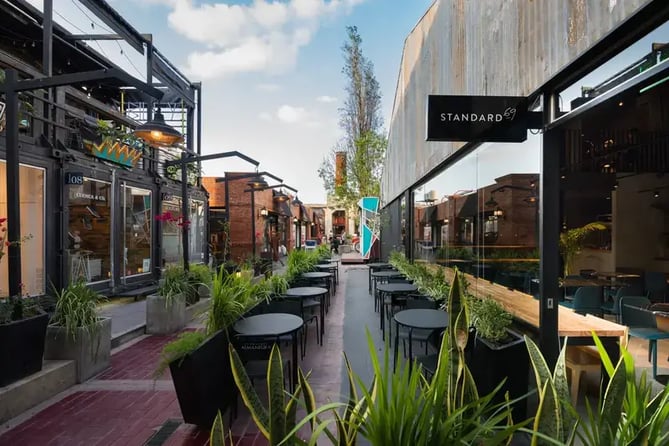
A well-depicted garden of the Standard 69 contributes to the enjoyable atmosphere this restaurant is known for, aside from providing an authentic gastronomic experience, making it a vital part of this restaurant layout.
Pure and minimalistic
.webp?width=669&height=904&name=image15%20(2).webp)
The interior design of this HIKKI restaurant in Osaka is based on pure white simplicity, allowing the guests to completely surrender to the rich flavors their cuisine offers.
The entire dining room floor, as well as the kitchen and toilets, are plain, with a touch of geometrically perfect decorations.
Spacious dining room floor plan
.webp?width=669&height=535&name=image14%20(2).webp)
This restaurant floor plan is made with ConceptDraw, illustrating how much space you can dedicate to the kitchen/bar/restaurant/patio to achieve well-balanced square footage.
The example contains a separate bar floor plan, a lounge zone, as well as a large storage space that every busy restaurant needs.
Restaurant layout for cozy outdoor lounge
-1.webp?width=635&height=953&name=image8%20(4)-1.webp)
This snug restaurant floor plan is an example of a dining area that prioritizes comfort over the number of guests it can serve at any time.
Floor plans like this are designed for laid-back customers that visit the restaurant for relaxation and get-togethers.
Bumble urban design
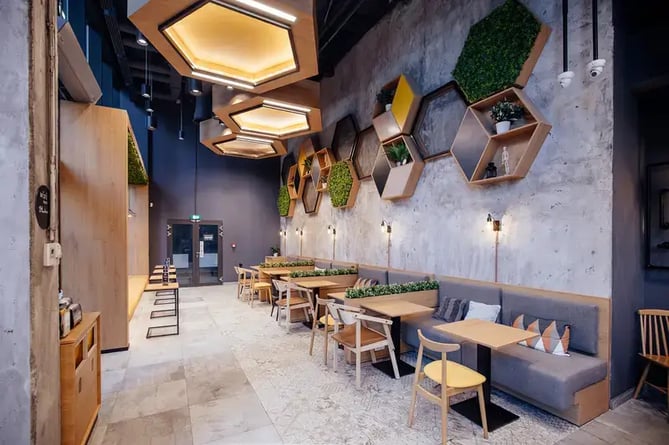
Neighbourgoods beer bar designed its bar floor plan inspired by the honeycomb octagon. Their interior designers used the high-sealing industrial physical space to create a sweet environment for people to catch up and grab a drink after work.
It is prepared for larger foot traffic and quick change of guest pairs.
Brunch and mirrors
-3.webp?width=669&height=447&name=image10%20(4)-3.webp)
Brunch cafe PUR*PUR created its floor plan to use every corner of the space. They set up bar stools against the large windows and filled in the central area with round tables and matching round mirrors on the sealing.
Multifunctional restaurant floor plan
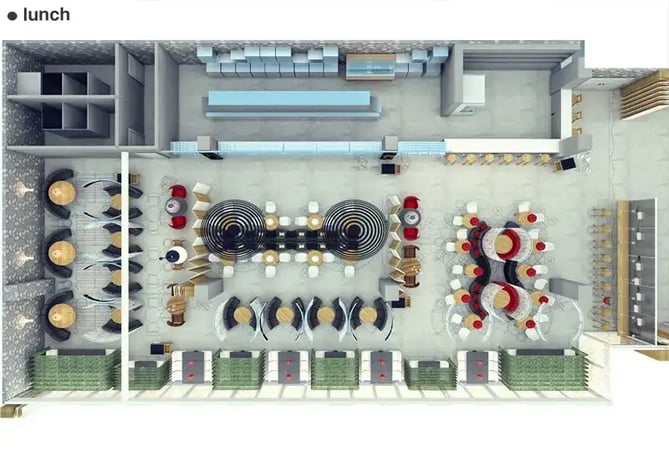
Chameleon is a floor plan designed by two award-winning architects - Arina Ageeva and Dmitry Zhuikov. It is created in a way to support multiple events - lunch, brunch, conferences, and fancy dinners.
It is a multi-functional dining space that can be easily transformed using light and tablecloths.
Urban farmer concept
.webp?width=669&height=452&name=image12%20(2).webp)
Sometimes the type of space you have implies the restaurant layout that would be suiting. This is the case with Urban Farmer, a spacious outdoor restaurant that combines urban lifestyle with rural aesthetics.
Creating a restaurant floor plan
In 2023, the restaurant floor plans were created digitally rather than sketched by hand as it used to be the case. There are different restaurant floor plan creator tools available for architects and designers, such as FloorPlanner.com, ConceptDraw, and RoomSketcher, to name a few.
Furthermore, digital restaurant floor plans offer a handy benefit when it comes to table management. By having a digital version of the restaurant layouts available for the waiters, you can optimize turning tables and increase the restaurant's efficiency.
With the right software you too not only manage the booking but also track the time your guests are spending in the entrance and waiting area, and manage the capacity of the restaurant, especially when you are dealing with a limited space.
You can also explore online table booking and so much more with Eat App. Moreover, you can create and redesign your floor plan to match your restaurant’s exact rooms and table layout, such as resizing tables or deleting tables to create more free space.
Conclusion
Setting up an ace floor layout is the first step to achieving a 5-star customer experience. It can determine the efficiency of the kitchen, speed of service, and flow of the table-turning,
Ultimately, it can make a difference in the number of guests you can serve and the overall customer satisfaction. You can easily maximize revenue from the floor plan by improving the functionality of each room and the way they are integrated with the restaurant.
Eat App has user-friendly software that can help you bring your restaurant floor management game to the next level, exploring different layouts and learning from the best practices our experts share with you regularly.
Once you sign up with Eat App, you get a 14-day free trial to explore our systems for managing floor plans, online booking, reputation management, and more. Furthermore, you get access to all our resources for free!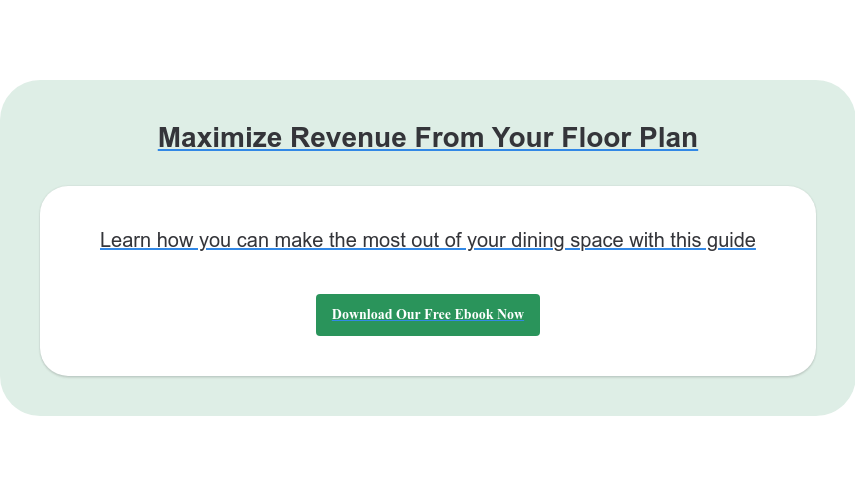
FAQ
Frequently Ask Questions
A restaurant floor plan maps out all the areas of your restaurant - kitchen, dining area, storage space, toilet, waiting room, and how they fit together.
Restaurant architecture is planned according to the restaurant's physical space available, and allocating it to dining space, bar area, storage spaces, and kitchen.
The restaurant layout is a scheme of a restaurant space that includes the dining room, waiting area, bathroom layout, seating capacity, etc. It is also called a restaurant floor plan.














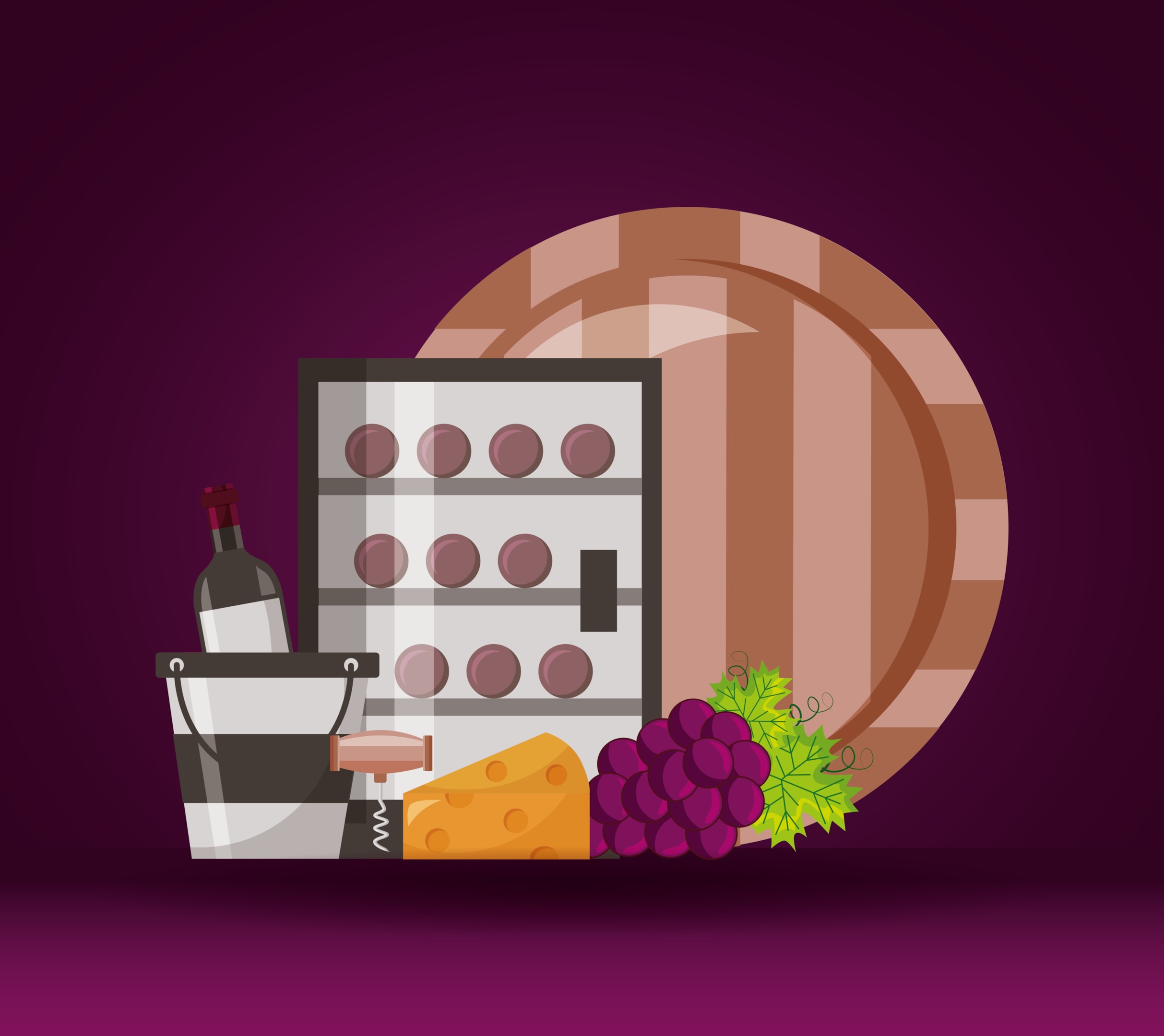
-1.png?width=1812&height=1072&name=TripAdvisor%20%26%20More%20Bookings%20(1)-1.png)
-2.png?width=1812&height=1072&name=Google%20Bookings%20(1)-2.png)


-1.png?width=200&name=TripAdvisor%20%26%20More%20Bookings%20(1)-1.png)
-2.png?width=200&name=Google%20Bookings%20(1)-2.png)
-1.png?width=200&name=Instagram%20Bookings%20(1)-1.png)
-1-png.webp?width=200&name=Facebook%20Integration%20Rectangle%20(1)-1-png.webp)







.webp?width=200&name=download%20(1).webp)
%20(1)-2.webp?width=200&name=Eat%20(34)%20(1)-2.webp)
%20(1)-2.webp?width=200&name=Eat%20(18)%20(1)-2.webp)





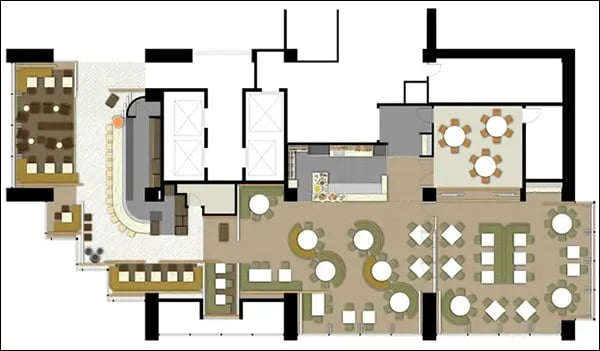


.webp?width=314&height=175&name=Chit%20Printer%20Banner%20(8).webp)



.webp?width=144&height=72&name=Eat%20App%20Logo%20(3).webp)